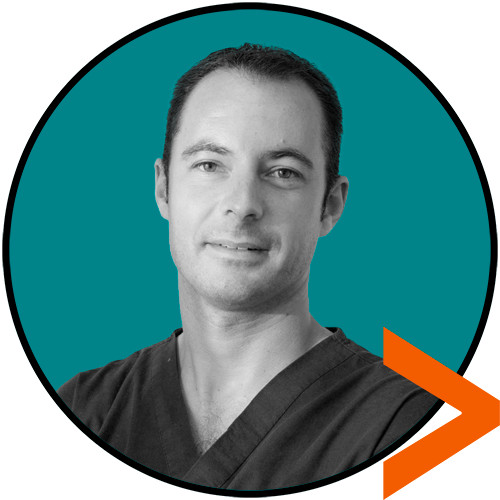The Esthetic Challenge in Immediate Loading Full-Arch Rehabilitation. Full Digital Workflow with IPG Technology
The rehabilitation of fully edentulous patients represents still one of the most complex oral treatment procedures, requiring a comprehensive treatment plan and the execution of an accurate combined surgical and prosthetic protocol. At the time being, among the available treatment protocols, the Columbus Bridge Protocol (CBP) has been proposed and validated by the dental schools of the University of Genoa and Turin (IT) with 20-years follow-up scientific studies. This protocol encompasses the rehabilitation of the edentulous arch by means a fixed screw-retained prostheses supported by four or six implants, no regenerative techniques and the insertion of distal tilted implants to avoid distal cantilever. Since the beginning of 2000’s, the CBP research team set the goal of the rehabilitation trying to develop and implement the esthetic and biomechanical aspects of the all-on-four treatment concept, focusing the mayor efforts to be able to achieve the FP1 “natural” esthetic solutions, optimizing the soft tissue contouring of prosthetic rehabilitation.
One of the milestone of the procedure following the original prosthetic phase includes an immediate plaster impression for the realization of screw retained fix provisional prostheses with a very precise immediate metal framework.
In the last 6/7 years the research and clinical activity of the group has been mostly dedicated to the digitalization of the procedure, such as the implementation of the diagnostic phases with face scanners and the use of digital impression.
One of the most epochal changes in this phase of the procedure has been represented by the introduction of the IPG technology in the registration of the position of the implants inserted, immediately after surgery. The author will describe how this instrument has radically changed the daily practice of the operators and permitted to develop the full digital CBP workflow, with the goal of the best esthetic full-arch rehabilitation in a short operative timing.
CV
Graduated at the University of Genoa, Italy, College of Dentistry. (final published thesis: “Finite Elements Analysis of load transmission at bone-implant interface using different degrees of inclination of the implants”)
He attended the Advanced Program for International Dentists in Periodontology and Implant Dentistry, New York University College of Dentistry, director Dr. Micheal Bral, chair Dr. Dennis Tarnow.
He obtained a PhD in Dental Materials, “San Luigi Gonzaga” School of Dental Medicine, University of Turin.
(final published thesis: “Shock absorption capacity of restorative materials for dental implant prostheses: an in vitro study”)
He obtained a Master Degree in Implant and Prosthetic Dentistry, University of Genoa, Italy.
Dr. Pera is full-time Associate Professor of Implant and Prosthetic Rehabilitation, University of Turin, Italy.
Director of the postgraduate II level master program in Implant Dentistry.
Working in private practice focusing the activity on Implant Surgery and Prosthodontic Rehabilitations.
Author of international publications on implants and prosthodontics, co-author of the book “Columbus Bridge Protocol: Immediate Loading Bridge”. Quintessence International.
-
Contenido relacionado
-
The Esthetic Challenge in Immediate Loading Full-Arch Rehabilitation. Full Digital Workflow with IPG Technology01/02/2025 14:00 - 14:30
Auditorio -
Key factors for a reliable full-arch impression: from plaster to the full digital workflow with IPG technology (ponencia en inglés)31/01/2025 15:00 - 15:30
Speech corner
 Información sobre Cookies
Información sobre Cookies


